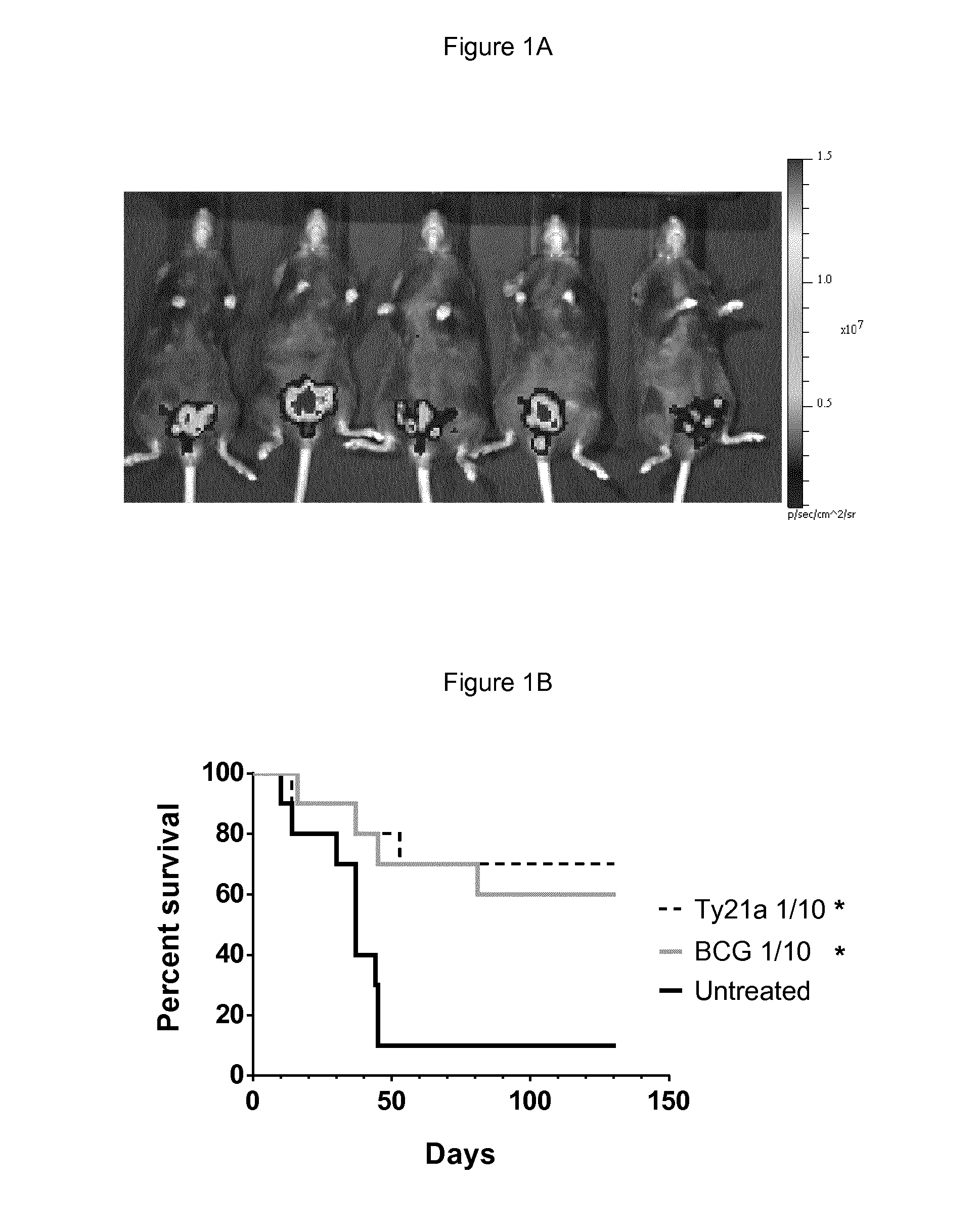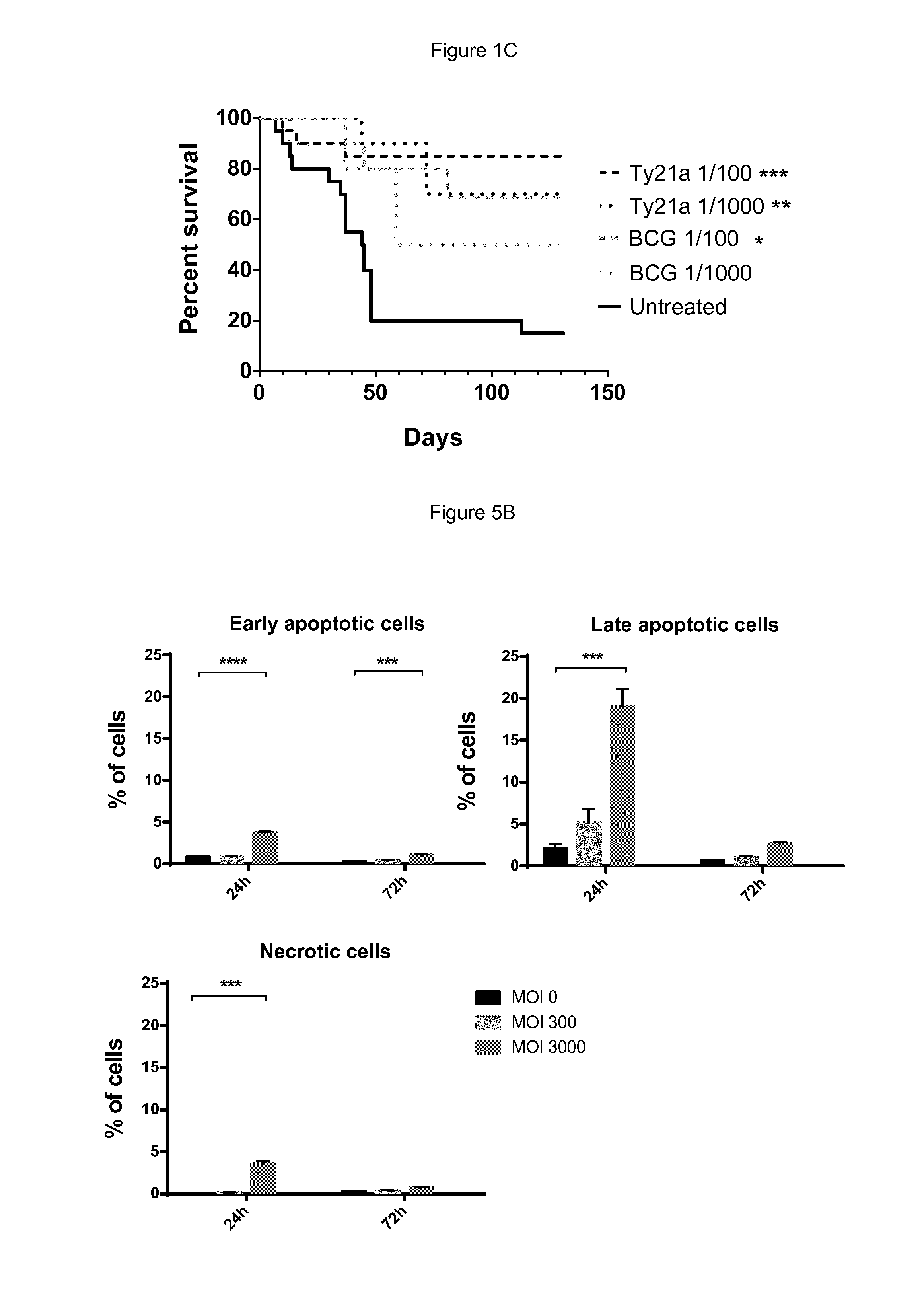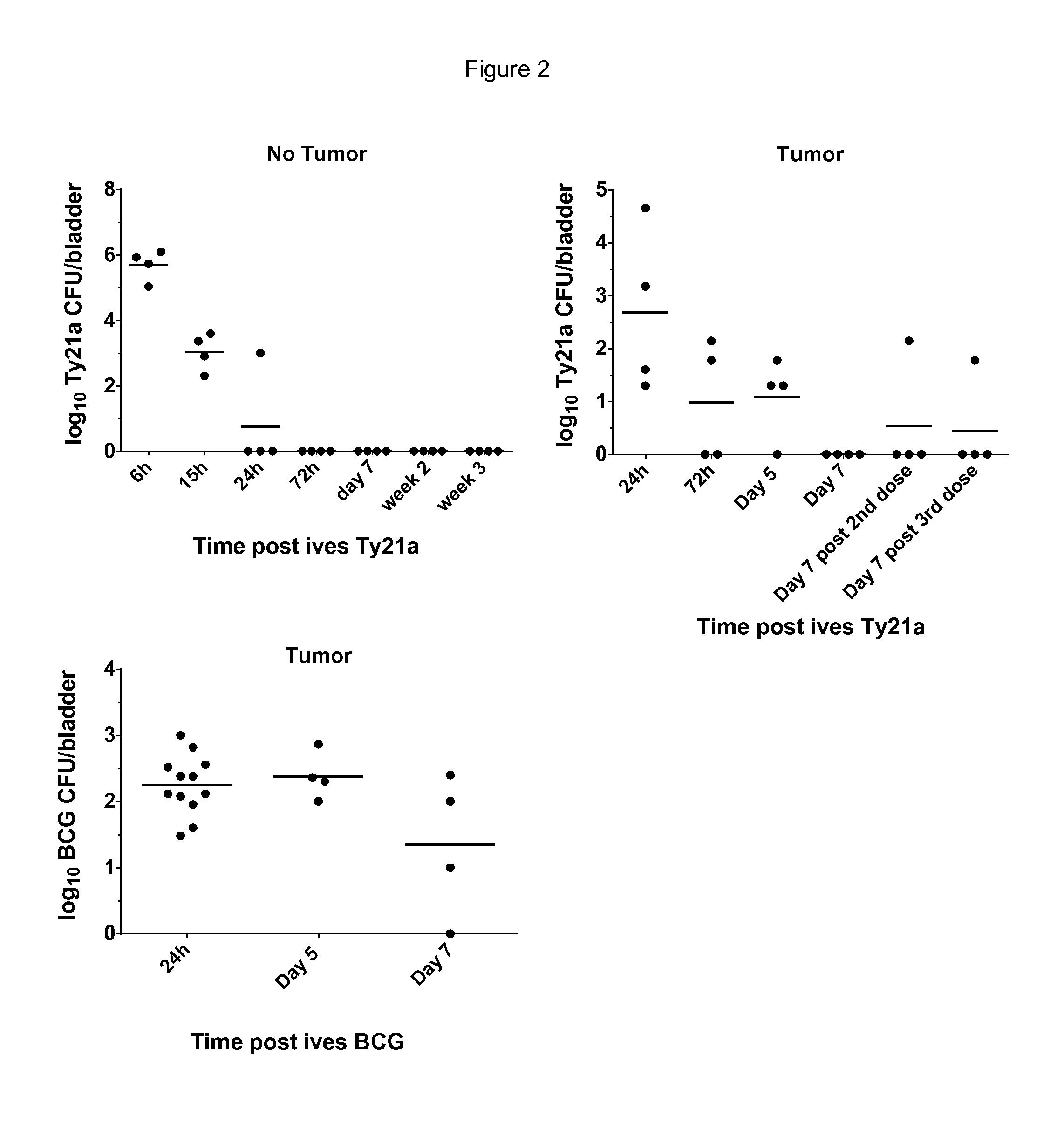Salmonella strains for use in the treatment and/or prevention of cancer
a technology of salmonella and cancer, applied in the field of pharmaceuticals, can solve the problem that none of them has achieved sustainable efficacy in human clinical trials
- Summary
- Abstract
- Description
- Claims
- Application Information
AI Technical Summary
Benefits of technology
Problems solved by technology
Method used
Image
Examples
example 1
Material and Methods
[0054]Mice and Cell Culture
[0055]Eight- to ten-week-old female C57BL / 6 WT mice (Charles River, L'Arbresle, France) were used following ethical directives of the Swiss veterinary authorities. MB49 cell line (kindly provided by Prof. A. Loskog, Uppsala University, Uppsala, Sweden) is a carcinogen-induced transitional cell carcinoma derived from a C57B1 / 6 male mouse (Summerhayes & Franks, 1979). The human urothelial cell lines RT4 (Rigby & Franks, 1970) and RT112 (Masters et al., 1986) were kindly provided by Professor Thalmann, Bern, Switzerland. All cell lines were maintained in DMEM media (Dulbecco's modified Eagle's medium) supplemented with 10% fetal bovine serum (FBS), 100 U / ml penicillin and streptomycin and Hepes (10 mM) (all from Invitrogen, Life technologies, Zug, Switzerland). MB49 cells were infected with Lenti-luc to generate MB49-luc cells, as described in (Decrausaz et al., 2011). Luciferase expression was measured after addition of D-luciferin (final...
example 2
Results
[0072]Ives Ty21a Treatment Increases Mice Survival in an Orthotopic Model of Bladder Cancer.
[0073]The potential of ives Ty21a to regress bladder tumors was assessed in the orthotopic bladder cancer model using MB49 cells. This mouse model resemble human superficial bladder cancer regarding cell surface markers, sensitivity to apoptosis and immunological profile (Chen, Zhang, Cao, Hessner, & See, 2009) and has been commonly used to understand and / or assess ives BCG immunotherapy (Loskog et al., 2005). To ensure bladder tumor monitoring, the inventors transduced MB49 cells with luciferase (luc)-expressing lentiviral vector to generate MB49-luc cells. In our setting a tumor-take close to 100% was obtained with 22% ethanol pretreatment before ives instillation of 200,000 MB49-luc cells (for representative experiment at day 8 see FIG. 1A). Three groups of 10 mice were ives instilled with 200,000 MB49-luc cells at day 0 and treated with BCG or Ty21a at day 1, 8, 15 and 22 or left u...
PUM
 Login to View More
Login to View More Abstract
Description
Claims
Application Information
 Login to View More
Login to View More - R&D
- Intellectual Property
- Life Sciences
- Materials
- Tech Scout
- Unparalleled Data Quality
- Higher Quality Content
- 60% Fewer Hallucinations
Browse by: Latest US Patents, China's latest patents, Technical Efficacy Thesaurus, Application Domain, Technology Topic, Popular Technical Reports.
© 2025 PatSnap. All rights reserved.Legal|Privacy policy|Modern Slavery Act Transparency Statement|Sitemap|About US| Contact US: help@patsnap.com



